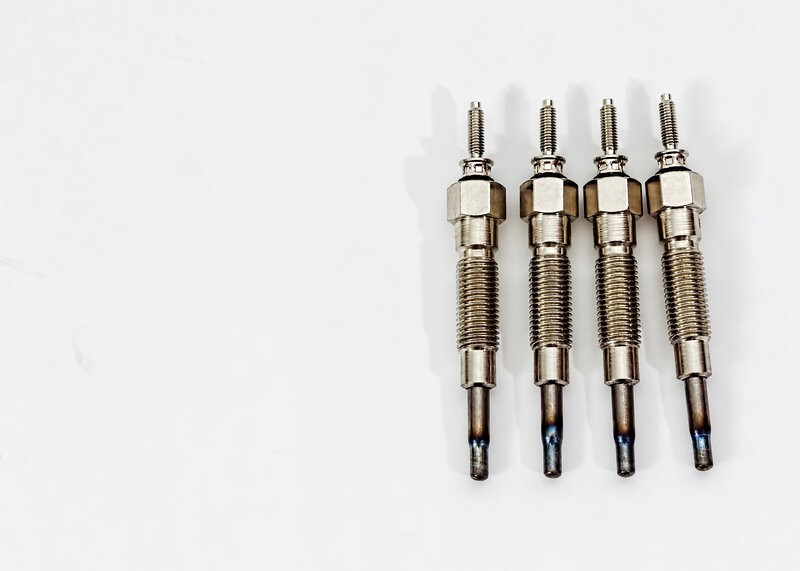Diesel engines are renowned for their robust performance and fuel efficiency, particularly in heavy-duty applications. However, like any complex machine, they can experience issues. One common problem area lies with the glow plugs, crucial components for cold-starting diesel engines. This guide provides a detailed walkthrough on How To Test Glow Plugs, empowering you to diagnose and address potential problems.
Understanding the Role of Glow Plugs
Before delving into testing procedures, it’s essential to grasp the function of glow plugs. Unlike gasoline engines that utilize spark plugs, diesel engines rely on compression ignition. Glow plugs preheat the combustion chamber, enabling the fuel-air mixture to ignite when the engine is cold. Without properly functioning glow plugs, starting a diesel engine in cold weather can be challenging or even impossible. Each cylinder typically has a dedicated glow plug. These plugs consist of three main parts: the tip, which heats up; the body, which conducts electricity; and the terminal, which connects to the vehicle’s electrical system.
A Step-by-Step Guide on How to Test Glow Plugs
Testing glow plugs involves a systematic approach to ensure accurate diagnosis. Follow these steps for a comprehensive assessment:
1. Initial Visual Inspection and Diagnostic Codes
Begin by checking for any obvious signs of damage, such as loose connections, corroded terminals, or physical damage to the glow plugs themselves. If your vehicle’s check engine light is illuminated, consult the owner’s manual to retrieve diagnostic trouble codes (DTCs). Specific codes can point towards glow plug issues, providing valuable clues.
2. Preliminary Check with an Infrared Thermometer
An infrared thermometer can offer a quick initial assessment. After running the engine briefly to warm the glow plugs, use the thermometer to measure the temperature of each plug. Significantly lower temperatures compared to other plugs might indicate a malfunctioning unit. However, this method isn’t definitive and should be followed by more accurate testing with a multimeter.
3. Setting Up Your Multimeter for Resistance Testing
A multimeter is the most reliable tool for testing glow plugs. Set the multimeter to measure resistance (Ohms). Before connecting to the glow plugs, touch the multimeter leads together and note the reading. This is the resistance of the leads themselves, which needs to be subtracted from subsequent readings for accuracy.
 testing glow plugs in 7 steps
testing glow plugs in 7 steps
4. Verifying Battery Voltage
Switch the multimeter to measure voltage (Volts). Connect the positive lead to the positive battery terminal and the negative lead to the negative terminal. A healthy battery should read around 12.6 volts when the engine is off and around 14 volts when the engine is running. This ensures sufficient power supply to the glow plugs.
5. Disconnecting and Inspecting Glow Plug Connectors
Locate the glow plugs in your engine (refer to your owner’s manual). Carefully disconnect the electrical connectors from each glow plug. Inspect the connectors for corrosion, dirt, or damage. Clean them if necessary.
6. Measuring Glow Plug Resistance
With the multimeter set to Ohms, touch the positive lead to the glow plug terminal and the negative lead to a good ground point on the engine block. Subtract the lead resistance measured earlier from this reading to get the actual glow plug resistance. Compare this value to the manufacturer’s specifications found in your vehicle’s manual.
7. Interpreting the Results
Each glow plug should have a resistance reading within the specified range. A significantly higher or lower reading indicates a faulty glow plug. Even if only one glow plug is bad, it’s generally recommended to replace the entire set to ensure consistent performance.
Conclusion
Understanding how to test glow plugs is essential for maintaining the reliability of your diesel engine, especially in colder climates. By following these steps and using the appropriate tools, you can effectively diagnose and replace faulty glow plugs, ensuring smooth starts and optimal engine performance. If you’re uncomfortable performing this task yourself, consult a qualified diesel mechanic. Regular maintenance and timely repairs will keep your diesel engine running strong for years to come.
